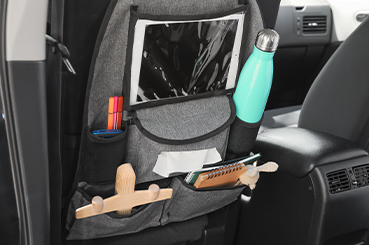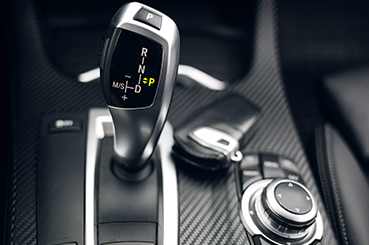Many of us rely on professional mechanics to make annual checks on our vehicles at our MOT or service. However, there’s plenty of simple car checks that we can make at home. Doing so will not only help to keep our car safer all year round but can also help to reduce running costs.
Your owner’s manual is a great place to find the information you should know about your car. Plus, it also holds key information about the standards which should be maintained. Adhering to this advice can help to boost your fuel efficiency and reduce emissions, as well as ensuring your warranty remains valid.
What’s more, making regular car checks could help you save money in the long run as it increases the chances of you spotting any problems early. This can prevent bigger problems occurring and result in you spending less on repair costs.

Things to Check on Your Car Regularly
So now you know the benefits of regular car checks it’s time to establish a routine. The best way to get into the habit of making regular vehicle checks is to set aside a specific day each month to carry them out.
These simple checks won’t take long to complete and you’ll soon find yourself getting through them in record time. So here we go, the car checks we recommend you carry out at least every month:
1. Tyres Checks
Firstly, it’s important to check that you have the correct size and type of tyres for the vehicle you’re driving, as well as the purposes it is being used for. In most cases this is a given, however, if you’ve recently bought a used car, then it is always best to double-check.
Once you’ve established you have the right tyres, it’s important to check that the tyres meet the legally required tread depth. In the UK the legal limit is 1.6mm across the central three-quarters of the tread around the complete circumference. If your tyres fall below this limit you can face up to three points on your licence as well as up to a £2,500 fine per tyre that fails to meet the standard.
An easy way to check the tread depth of your tyre is using the ‘20p test’. Simply take a 20-pence piece and insert it into the tread of your tyres. If you can see the outer ridge on the 20 pence then the tyre is likely to be below the legal minimum requirement and indicates the tyre needs replacing. Bear in mind you need to carry out this test at various points around the tyre and on the different tread ridges.
Finally, it’s important to check the tyre pressure of your tyres using a pressure gauge. If you don’t have one, many fuel stations have air gauges and pumps available for a small fee. Don’t forget your car manual should tell you what pressure the tyres should be.
It’s also a good idea to check your tyre pressures after you drive over any large bumps or kerb the car, or when there is a dramatic change in temperature. All of which can have a significant impact on tyre pressures.

2. Under The Bonnet Checks
Checking under the bonnet may seem like a daunting task, but everyone is capable of carrying out a few basic checks. You should look for split or cracked spark plug wires (on petrol cars), cracked radiator hoses or loose clamps. If you notice anything that doesn’t look right, you should get a professional opinion.
Next, it’s a good idea to take a look around the car checking for any signs your car may be leaking. You can often tell the potential cause of the leak by the colour of the fluid. Oil is usually black, and steering and brake fluid is clear with a slightly brown tinge. Meanwhile, coolant is yellowish/green and the windscreen washer fluid is bright blue or pink.
Any signs of liquid left on the floor underneath the car could indicate a leak, so it’s important you get a mechanic to investigate the cause. Many leaks can be fixed easily if caught early but can result in expensive repairs if you don’t act when you first notice something amiss.
3. Oil Checks
Regular oil checks are a vital part of keeping your car healthy. To check the oil level involves locating the dipstick under the bonnet, wiping it clean, and reinserting it. Once pulled out again, the oil level should fall between the minimum and maximum markings on the dipstick. If the oil is low, adding some of the correct oil is necessary.
Aiming for a check every week ensures you catch any minor leaks or oil burn-offs before they cause problems. This simple routine can help prevent engine damage and extend the life of your car.

4. Brakes Checks
The brakes are one of the most important aspects of your vehicle, so it is essential you regularly make sure they are in full working order. It is best to check your brakes on a quiet, flat stretch of road. You should gently rest your hands on the steering wheel and start to apply the brakes, gently increasing the pressure. If the vehicle veers to one side it could indicate the brake lining may be more worn on one side than another. It is best to get them checked out as it can also indicate the brakes need adjusting or that the wheels are misaligned.
Plus, keeping your braking system in top nick involves checking the brake fluid level regularly. Pop the bonnet and find the brake fluid reservoir. It’s usually a translucent plastic container with a minimum and maximum fill line marked on the side. Give it a quick peek to see if the fluid sits between those lines. If it’s low, topping it up with the correct fluid type might be needed, but it’s always best to consult your car’s manual or a garage if you’re unsure. Making a habit of this simple check every few weeks ensures your brakes are fighting fit for safe driving.
5. Wiper Checks
Keeping your windscreen clear in a downpour relies on having enough windscreen washer fluid. To check, locate the bonnet release lever (usually inside the car near the driver’s seat) and open the bonnet. Look for a translucent reservoir, often labelled with a washer symbol, near the base of the windscreen. The wiper fluid level should be between the minimum and maximum markers etched on the side. If it’s low, top it up with a good quality windscreen washer fluid suitable for the season. Remember, a quick check every month ensures you’re never caught short with a dirty windscreen on a rainy day.
Also, the rubber on wiper blades can deteriorate over time causing it to split and crack. When this happens the wiper blades not only smear dirt rather than clearing it, but can also scratch the windscreen. Wiper blades are relatively cheap and incredibly easy to replace and doing so can help prevent more extensive damage to your windscreen.

6. Car Lights and Electrics
There are a range of electrics on your car from your headlights to your car battery, so it’s important to make sure they are all working correctly from time to time.
It’s easiest to check your lights are all working with someone. Get them to walk around the vehicle and check the lights as you switch them on/apply the brakes. If you don’t have someone to help, park somewhere you can see the reflection of the lights as you apply them.
You should also check over your car battery making sure the terminals are clean and free from corrosion. It’s important to remember that car batteries over five years old are prone to deterioration, which can result in problems starting.
7. Interior Clean
A spotless interior isn’t just about pride and joy; it contributes to a healthier driving experience too! Regular interior cleaning helps maintain your car’s value and prevents lingering crumbs and spills from attracting unwanted pests. Start by removing all loose items and rubbish. Then, tackle the dust with a microfibre cloth or vacuum cleaner with an upholstery attachment, paying attention to crevices and vents.
A clogged or faulty air filter can reduce your fuel efficiency and lead to reduced engine power. To prevent this, it’s important to check your air filter regularly. Your car manual will usually give you full instructions for doing so.
The filter is usually housed in a black box under the bonnet and is simple to remove. Once you have removed it you should check to see how clogged it is and replace it with a new one if necessary.
Don’t forget to disinfect high-touch surfaces like the steering wheel, gear stick, and door handles with a suitable interior cleaner. For stubborn stains, consult your car’s manual for recommended cleaning products. Finally, clean the windows with a streak-free glass cleaner for optimal visibility. By dedicating a little time to interior cleaning, you’ll create a fresh and comfortable driving environment for yourself and your passengers.

8. Exterior Clean
Keeping your car’s exterior clean isn’t just about a gleaming paint job, it’s also part of preventative maintenance. Regularly washing your car removes dirt, grime, and road salt (especially important in winter) that can damage the paintwork and cause rust.
Aim for a good wash every few weeks, or more often if you’ve been caught in bad weather. Use a proper car wash shampoo and two buckets – one for soapy water and another for rinsing – to avoid scratching the paint.
Don’t forget to clean the wheels and wheel arches, as built-up brake dust can damage the alloys. Drying with a microfibre cloth helps prevent water spots and keeps your car looking its best.
When to Seek Out A Garage
If at any point during these car checks you think something may be faulty, you should get it checked by a professional mechanic. At Stoneacre, we have fully equipped garages at all of our sites and our fully trained mechanics are able to offer the advice you need to keep your car on the road.




